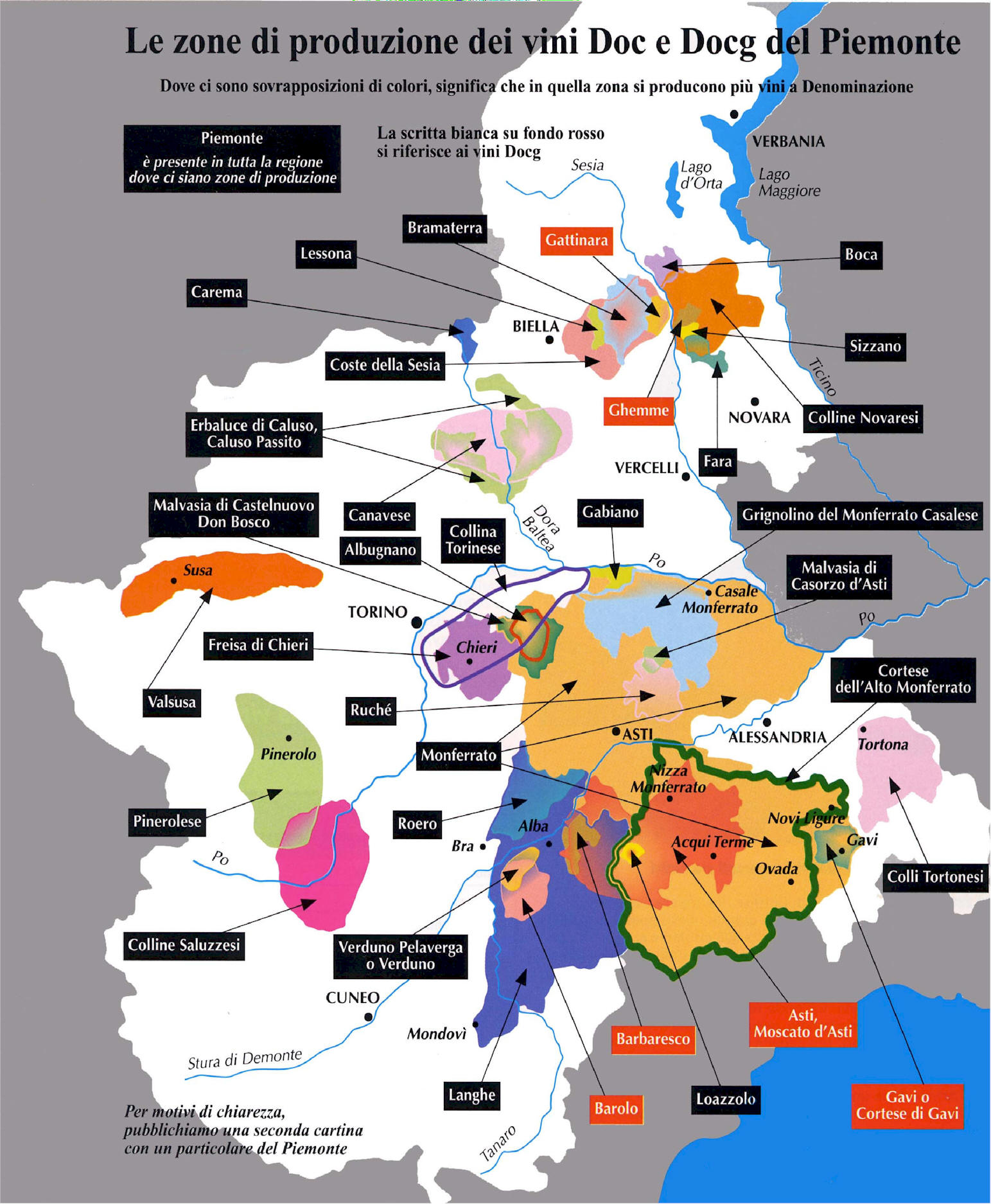
I started my relationship with wine while working in an Italian wine bar on the Lower East Side of Manhattan. Since Italians were the first wines I really got to know, I thought they'd be a good subject for my first post. But then I got all busy writing tasting notes about the Cabernet and the
Gigondas below, and I put this post on the back burner, but here it is, finally complete in all it's glory.
So, we've got a map of the wine regions of Piedmont over here, and as you can see, it's a little complicated. I'm going to do my best here to break down the basics.
To many uninitiated American consumers, one of the most recognizable areas in Piedmont is the
Asti area. Some great wines come out of this region, however it's fame comes not from the quality of wines, but rather from that Martini and
Rossi Asti Spumanti garbage that was marketed all over
TV in the 80's. I've met a lot of people who have shied away from any wines with the
d'Asti designation because of this association. Rest assured, that mass-marketed plonk is in no way representative of the real wines from the
Asti region. The
Asti Spumanti crap from
tv was a bastardization of
Moscato a'Asti, a low-alcohol, slightly sparkling,
slightly sweet white wine that I happen to love. As an
aperitif, it's a great alternative to Champagne, with acidity that makes them a great palate cleanser, which also makes it a great wine to serve between courses, especially if you're changing from one wine to another, or serving sorbet or anything like that. It's also an awesome wine to serve with spicy food, and if you've never tried pairing lightly sweet wine with spicy food, you're missing out. A sweet German Riesling with some spicy Thai food can be an incredible combination, and I absolutely love
Moscato d'Asti paired with spicy seafood tacos. I might have to start putting recipes on my blog too, because my spicy seafood tacos are the stuff that dreams are made of.
So, whites aren't really the big thing in Piedmont. The only other white that I can even think of off the top of my head is
Roero Arneis.
Arneis tends toward delicate, grassy, sometimes floral character on the nose, crisp on the palate, finishing with an almost nutty character.
If there are any wine people reading this, you're probably getting pretty irritated at the fact that I've been talking this long about Piedmont without mentioning
Barolo, and to those people I say, calm down. I'm trying to make this crap accessible here, and this is some dense material. So,
Barolo is the big daddy wine of Piedmont. It's frequently referred to as "The king of wines, and the wine of kings." It's kind of weird to me that, while
Barolo and
Barbaresco are commonly described as the masculine and
feminine expressions of the
Nebbiolo grape respectively,
no body's ever tried calling
Barbaresco "The queen of wines, the wine of queens." I guess that does sound kind of gay though.
The
Nebbiolo grapes tend to ripen earlier in
Barbaresco, and the wines undergo a shorter maceration, and so generally mature earlier, usually becoming ready to drink within 5-10 years of vintage.
Barbaresco commonly shows aromatic notes of roses or violets, with tart cherry, truffles, and licorice on the palate.
Barolos generally need at least 10 years to reach maturity, especially the more traditionally styled wines. Mature
Barolos will also tend to show floral characteristics on the nose, but they will generally be accompanied by darker character of tar, leather and tobacco.
The folks in Piedmont can't sit around waiting for their wine to mature all the time, of course, so they also make several wines which are meant to be consumed within just a few years of bottling. Nebbiolo grapes are also used to make younger wines called Nebbiolo d'Alba and Langhe Nebbiolo, which can be great entry-level wines for somebody trying to learn about Barolo and Barbaresco, but not wanting to spend a fortune. These wines are only required to age for 1 year before bottling, and are generally lighter, less intense versions of Barolo and Barbaresco. Also intended for early consumption are
Barbera and
Dolcetto, and you can generally find a broad selection of good quality wines from each of these grapes for under $20. Both wines are generally light to medium bodied.
Barberas are generally slightly smoky, with ripe fruit flavors.
Dolcetto's name translates literally as "little sweet one," however these are not sweet wines. The name most likely is a reference to the sweetness of the grapes, but may also refer to the aromatics of the wine, which can be very fruity and floral, and can give off the impression of sweetness on the nose. There are also a few producers who make
barrique-aged
Barbera wines, which are generally more intense and complex, and will last much longer in the cellar. Unfortunately there's not a different DOC designation to alert the consumer of which they're buying, so often the only way to tell is by price, as the
barriqued versions are usually about 50% more expensive than their counterparts.
Ok, I'm done talking about Piedmont for the moment. I know I didn't cover everything, so I'm sorry if there are any
Freisa Fanatics out there who feel overlooked.
I'm sure I'll have something else I need to spout off about before too long.
Until then, may the force be with you.

